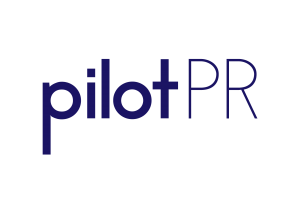When the distribution of misleading information is almost overwhelming depending on where you get your news, now is an opportunity for leaders to take on the responsibility of sharing the facts about what your business is doing at this time. Audiences are used to feasting on the buffet of information (or misinformation) that the 24-hour news cycle, online platforms and social media has served up to us. So, if you’re not giving the information to your stakeholders, your audience will fill the vacuum and get it elsewhere.
The 2019 PwC Global Crisis Survey found that most view the management of a crisis – and communicating what you’re doing about it – as the responsibility of the c-Suite. Nothing new there. So, here are my thoughts on how leaders can communicate effectively and with purpose when stakeholders need accurate, human-to-human, rapidly distributed information.
-
Just do it. And keep doing it.
At a time when new advisories, laws, infection rates, travel bans, lockdowns, business cut-backs and (sadly) closures are being announced by the hour, people – whether they’re your employees, clients, partners or customers – are looking for information. And reassurance. And maybe some control. In our always-on news and information cycle, if it’s not you giving your audiences the information they need, they’ll get it from somewhere else. So it may as well be you and your business. Do it, and do it often.
-
If you’re already doing it, review your scheduled content.

If this point doesn’t apply to you because you’re a leader who isn’t actively communicating with a range of external audiences yet, skip to point three. If you are the leader of a business that schedules content, this step should have happened weeks ago, but I’ve seen several brands apologise recently after they posted scheduled content that is out of sync with what is happening right now.
I’m stating the obvious when I say this erodes trust, makes you and your brand look like a machine, and disengages your audiences. These are some of the things you as a leader and your brand need right now. If you don’t have one already, create a template for activating a content review process as soon as an event like this starts to emerge. And revisit it regularly. Make the process (not a person) accountable, so nothing slips through due to human error and you’re communicating what’s relevant to your audiences at the right time.
If you’re a leader who uses scheduled content for your own purposes, you should have already done this too. The post scheduled for next month that’s a ‘throw-back’ to you giving that keynote in X country in front of X number of people and talking about X future trend will do you damage right now. In fact, at this time, I’d say do away with scheduled content and post from the heart and when it’s right for you as a leader, your audience, and your business.
-
Push past your vulnerabilities.
If you’re a CEO who’s very comfortable in front of your team, but you feel vulnerable in front of external audiences (four in 10 CEOs rank this as one of their top three vulnerabilities according to PwC), now is the time to get over that. If this is you, use a platform that you feel comfortable on and use it well and regularly (if that platform isn’t video I’ve got bad news for you – see my next point). Just make sure you don’t hide behind that one platform or format, it’s vital that your audiences hear from a human right now. Use the platforms you feel most comfortable with initially and know you’re going to expand the platforms you communicate on and in what formats from there – very soon.
-
Use video.

It’s human. It’s fast. It puts a face to your business. It makes you more real as a leader (less Wizard of Oz, more John Legere). If you take the time to film, use it on as many platforms as you can and get it to as many stakeholders as you think will benefit from the update. Record a few different versions if you need to, so you can engage internal and external audiences. Use empathetic, relatable language. Be direct. Keep them short. Make it brief (again, think Ardern not ScoMo). CEO of Goldman Sachs David Soloman held a virtual town hall meeting with his global teams, and then posted about it on Instagram and other social platforms to give external stakeholders an insight into how he is leading his people right now.
-
Base your updates on data.
The speed at which this crisis is unfolding combined with the media’s unending appetite for new information means that updates can be unclearly reported. Though I say that and note that there are many media outlets at pains to be factual and accurate. So, make it that you’re one of the leaders and businesses that arms your stakeholders with the facts about how you’re leading your business and how it will impact them. Use data to support the decisions you’re making and communicating truthfully. At a time when events are unfolding rapidly and messaging can be unclear, there is truth and security in numbers. Using data also enables you to tell your audiences not just what you’re doing, but why and why it has meaning for your business and them. Don’t use data reported from media stories, get it from the source. Choose several trustworthy, top tier authorities for your data and rely on only them.
-
Know who needs to hear from you and don’t be shy.
Now is the time to communicate broadly. Make contact with anyone who you think will benefit from either hearing from you personally or by receiving an update on what your business is doing about COVID 19. Tell as many stakeholders as you can and give them the option to opt out so they can if they want.
-
Expand the platforms you communicate on.
Only ever sent internal staff memos and presented at company town halls previously? Consider video. Haven’t shared your message on LinkedIn previously? Share a version of the updates you’re giving to close external partners there too so your industry and connections know what you’re doing. Tweet links to updates. Maybe now is the time to be on Instagram for video and picture insights. Send your updates to select media when it’s relevant to them. By doing this, you’re reaching as many people as you can, but you’re also making your information easier to find when someone goes looking for it. And they will.
-
Be the voice for your industry or sub-set of your industry.
This links in with the point about not being shy, but make sure the media, influencers, government stakeholders, industry associations and any other relevant or influential stakeholder knows what you and your business are doing about COVDID 19. While fact-based and empathetic information is what people need right now, you can view this proactive approach to communicating with stakeholders that may be beyond your usual sphere – especially external ones – as something you’ll maintain when this crisis is over. It will support you and your business’s recovery in the future, but more about that in another post.
-
Be human.
Video helps you be a human to as many people as possible. Show empathy and let people see how the human you is managing this crisis. It’s not BAU anywhere in the world, so don’t pretend it is. Show people how you are managing the emotional and mental impact – exercise, quality time with your children (or if you’re more realistic – the horrible mess your house is in because you’re #homeschooling), a glass of wine, cooking, Zoom with your extended family, reading – anything to show you’re human too. Just channel Jacinda Ardern with her lockdown video and you’ll be on the right path.
pilotPR newsletter subscribers receive these articles before anyone else. To be the first to receive insights like these, subscribe to the pilotPR newsletter here.
Angela Cross is a reputation strategist who works with c-Suite leaders and brands to build and protect their reputations through PR, corporate social media, industry profiling, stakeholder engagement, and effective issues management. If you would like to build your reputation with purpose and authority, email her here.



